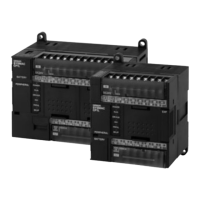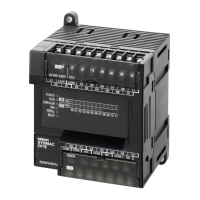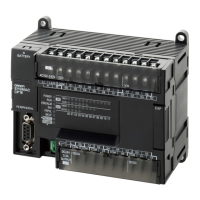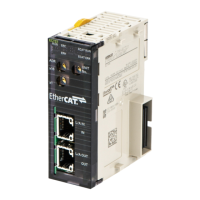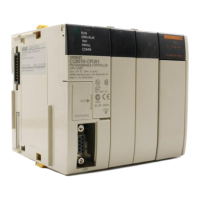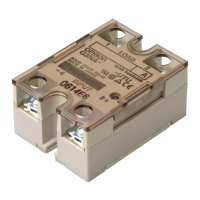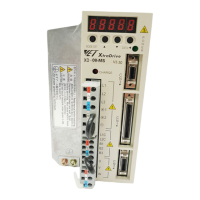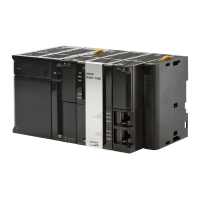287
Pulse Outputs Section 5-3
• The frequency can be changed. (The target frequency can even be
changed during acceleration or deceleration.)
• The acceleration/deceleration rate can be changed. (The rate can
even be changed during acceleration or deceleration.)
• The output mode and direction cannot be switched.
(6) ACC(888) (Independent) to PLS2(887)
• The number of pulses can be changed. (The setting can even be
changed during acceleration or deceleration.)
• The frequency can be changed. (The target frequency can even be
changed during acceleration or deceleration.)
• The acceleration/deceleration rate can be changed. (The rate can
even be changed during acceleration or deceleration.)
• The output mode and direction cannot be switched.
(7) ACC(888) (Continuous) to PLS2(887)
• The frequency can be changed. (The target frequency can even be
changed during acceleration or deceleration.)
• The acceleration/deceleration rate can be changed. (The rate can
even be changed during acceleration or deceleration.)
• The output mode and direction cannot be switched.
(8) PLS2(887) to PLS2(887)
• The number of pulses can be changed. (The setting can even be
changed during acceleration or deceleration.)
• The frequency can be changed. (The target frequency can even be
changed during acceleration or deceleration.)
• The acceleration/deceleration rate can be changed. (The rate can
even be changed during acceleration or deceleration.)
• The output mode and direction cannot be switched.
5-3-9 Variable Duty Factor Pulse Outputs (PWM(891) Outputs)
Overview
PWM (Pulse Width Modulation) pulse outputs can be output with a specified
duty factor. The duty factor is the ratio of the pulse's ON time and OFF time in
one pulse cycle. Use the PWM(891) instruction to generate variable duty fac-
tor pulses from a built-in output.
The duty factor can be changed while pulses are being output.
Bit Allocations
Word Bit Function
CIO 101 00 PWM output 0
01 PWM output 1
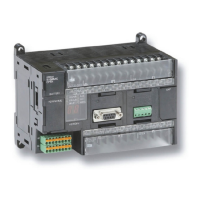
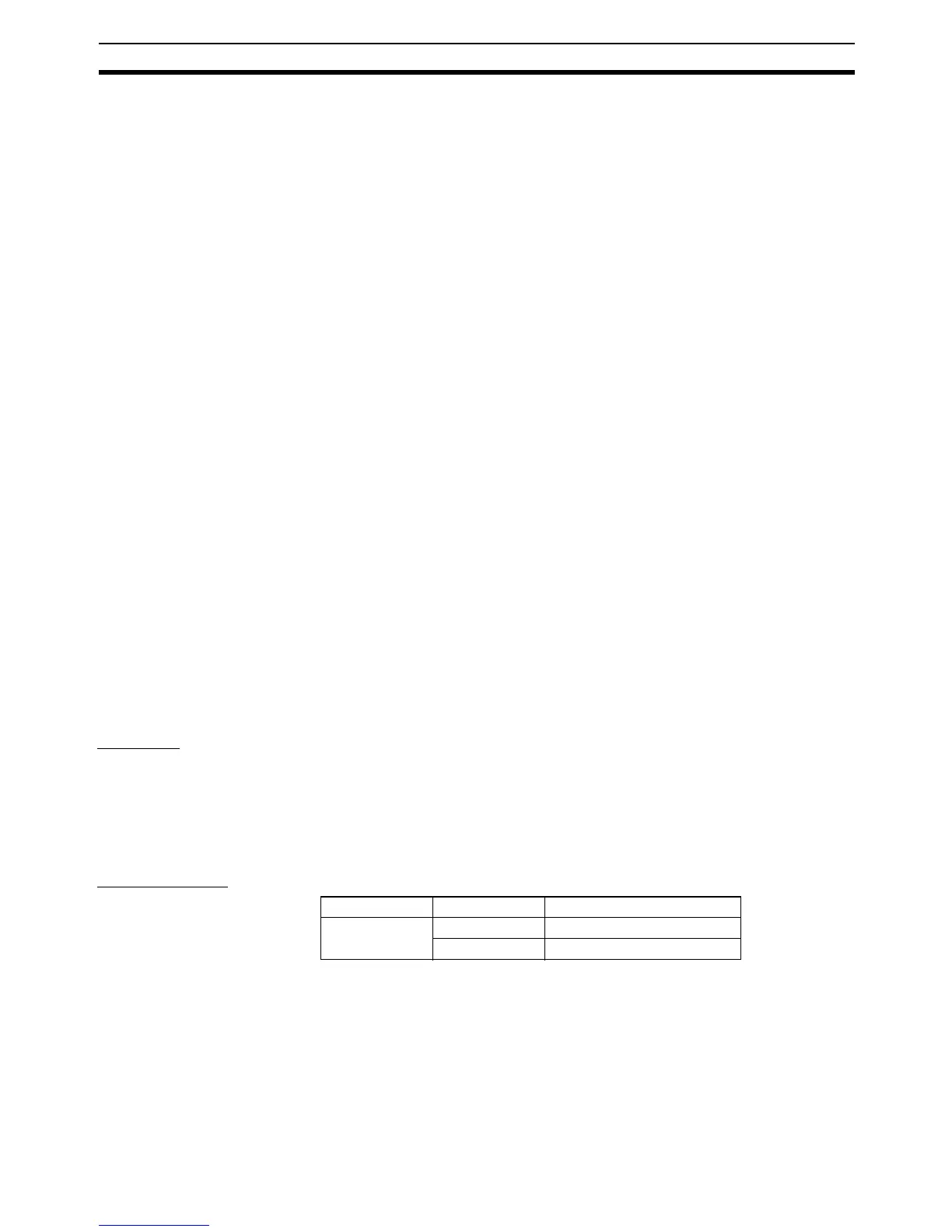